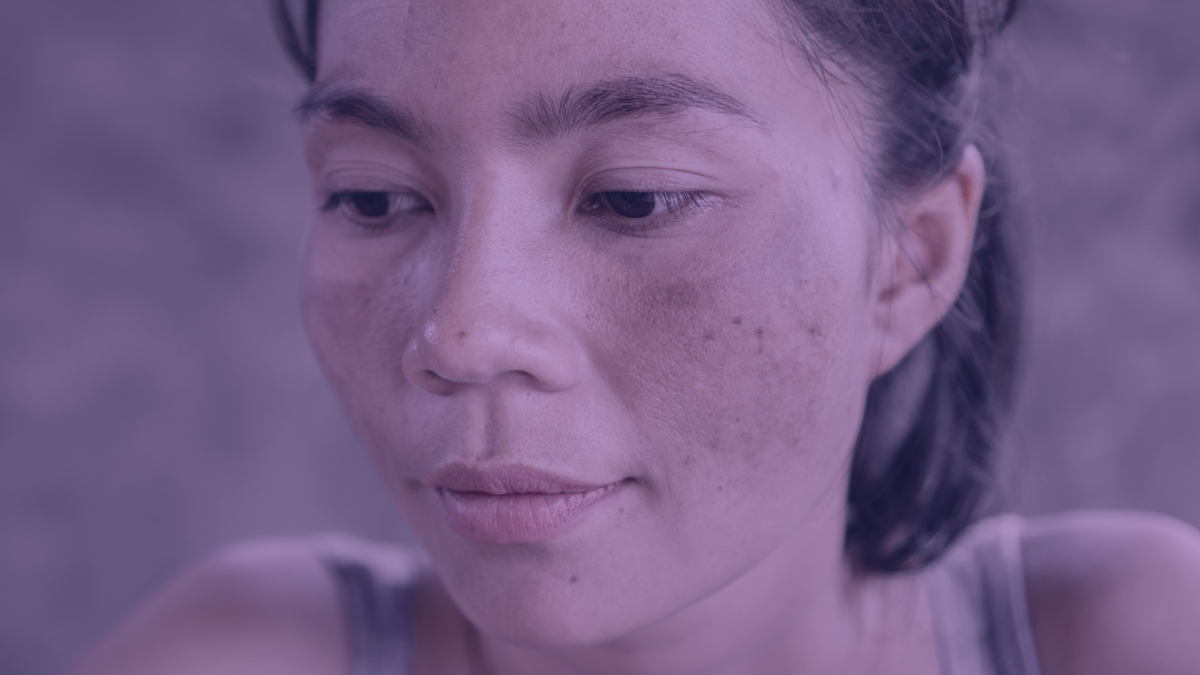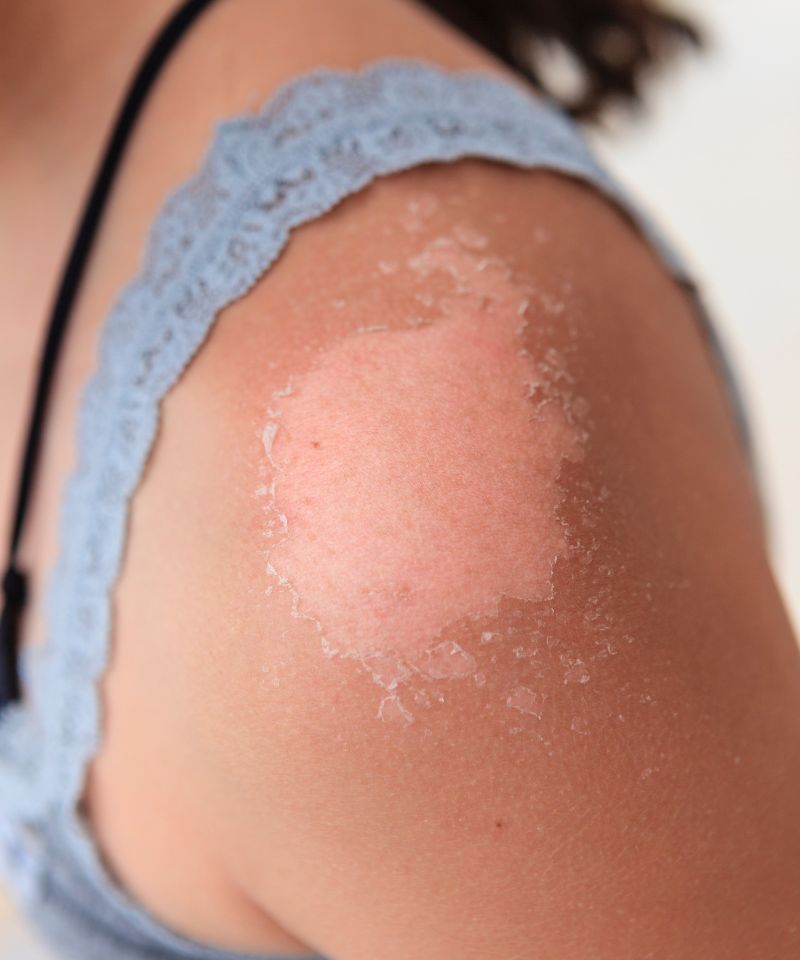While essential for all life on our planet, UV rays can also cause some serious damage.
From short-term sunburns and heat strokes to long-term and more serious conditions such as eye damage and skin cancers, the sun is not to be underestimated.
Therefore, in this article, we will be exploring how UV rays can harm us, along with providing useful tips to help you protect yourself from the sun and avoid skin damage and health issues in the long run.
With that said, here are some of the best ways to protect your skin from sun damage:
- Avoid peak sun.
- Seek shade while outside.
- Wear protective clothing.
- Wear a hat.
- Wear sunglasses.
- Apply sunscreen with broad-spectrum protection.

What is UV Radiation, and Why Is it Harmful (to Your Skin)?
Ultraviolet (UV) radiation is part of the electromagnetic light spectrum that reaches the Earth from the sun.
Invisible to the naked eye and essential for life on our planet, UV rays promote a series of beneficial responses in our bodies.
Besides ensuring our survival by inducing photosynthesis and growing our food, UV rays also contribute to the photodegradation process, which breaks down pollutants and other harmful substances in the environment.
Additionally, UV rays also keep us healthy by helping our skin produce vitamin D, a crucial nutrient that aids in the absorption of calcium and phosphorus, promoting healthy bones and teeth.
However, besides all the positives, overexposure to UV rays can cause quite a bit of damage to our skin, eyes, and overall health.
To understand how this happens, we need to look at the different types of UV rays and how they interact with our bodies.
UV radiation is divided into three different types:
UVA
These rays are present in the environment all year round, regardless of whether the weather is sunny, rainy, or snowy.
They are essential for vitamin D synthesis and healthy teeth and bones; however, overexposure to these rays can cause cell damage.
Cell damage occurs when UVA rays penetrate the skin’s outer layer and reach the cells located in the dermis, disrupting their molecular bonds and changing the DNA structure of cells.
This damaging effect can lead to visible skin changes, such as premature signs of lines and wrinkles, sagging skin, age spots, and overall aged appearance.
UVB
UVB (commonly known as the burning rays) are the primary cause of skin reddening and sunburn and are strongest during summertime, as they are more powerful when the sun is higher in the sky.
They damage the skin by reaching into the deeper layers of the epidermis and triggering the melanocyte cells into a protective mode.
These cells then begin to produce a brown pigment known as melanin, which gives our skin its color but can also lead to significant darkening, or tanning, of the skin when a lot of it is being produced.
Melanin is one of our body’s natural defense substances, which is why a darkening of the skin occurs whenever trauma or injury occurs.
Besides tanning, we can also observe a darkening of the skin after a pimple heals and leaves a dark spot behind or after a cut scars, leaving behind an uneven tone.
Excess melanin production always signifies skin trauma, injury, or damage, which is why a tan is basically the skin’s response to harmful UVB rays.
UVC
Ultraviolet C rays are the highest-energy, most dangerous type of ultraviolet light. The Earth’s atmosphere absorbs UVC rays, so they do not reach the ground and are not a factor in skin damage and serious skin conditions such as melanoma.
UV Index and Risk Levels

The UV Index is a tool developed by the World Health Organization to help us understand the intensity of UV rays at a given place and time.
This international standard measurement is designed to indicate the potential for skin damage and the risk level of sun overexposure.
The UV Index scale ranges from 0 to 11+, each with corresponding risk levels:
0-2 represents a low danger level from the sun’s UV rays for the average person. Still, even at this stage, taking precautions is recommended.
3-5 signifies a moderate risk of harm from unprotected sun exposure, and protection against skin and eye damage is required.
6-7 indicates a high risk of harm from unprotected sun exposure. Protection against skin and eye damage is essential at this level, and reducing the time spent in the sun is recommended.
8-10 represents a very high risk. Extra precautions should be taken as skin and eyes can be damaged quickly. This is when seeking shade and spending limited time in the sun is required.
Finally, a UV Index of 11+ signifies an extreme risk level. Unprotected skin and eyes can burn in minutes, and taking extra precautions is essential.
6 Ways To Protect Your Skin From UV Damage

Here are six effective ways to protect yourself from UV damage:
#1 Avoid Peak Sun
The intensity of UV radiation is highest between 10 am and 4 pm when the sun is at its peak.
To avoid overexposure to UV rays during this time, it is best to stay indoors or in shaded areas for shorter periods.
Longer periods out in the sun should be done outside these peak hours.
#2 Seek Shade
If you must be outside during peak sun times, try to find a shady spot or use an umbrella for extra protection if you are moving from one location to another.
#3 Wear Protective Clothing
Wearing protective clothing during high heat is another fantastic way to protect yourself from UV damage.
However, clothes provide different levels of UV protection; therefore, it is important to know the type of fabric you wear and how much protection it provides.
Here are some of the best fabrics that provide UV protection listed from the highest to lowest:
- Wool.
- Nylon.
- Polyester.
- Silk.
- Linen.
Additionally, try to wear dark clothes as they provide better protection than light-colored garments.
Also, opt for loose-fitting clothing as much as possible, as this allows air to circulate better and keep you cool, besides providing extra protection from the sun’s rays.
Tight clothing can stretch and reduce the level of protection offered as the fibers pull away from each other and allow more UV light to pass through.
#4 Wear a Hat
Wearing a large-brimmed hat while moving under the scorching rays is also preferable, as it will guard your cheeks and the delicate, thin skin on your neck from burning and prolonged sun damage.
#5 Wear Sunglasses
Besides damaging our skin and causing pigmentary changes, dark spots, and wrinkles, UV rays can also severely affect our eyesight.
This happens because UV rays modify lens proteins in a distinct process known as glycation. During this process, proteins cross-link with each other and lead to a yellowing of the lens and a decrease in its optical clarity. This can lead to cataracts, macular degeneration, and other serious eye conditions.
Additionally, UV rays also cause oxidative stress by generating free radicals and leading to protein modification and lipid peroxidation, resulting in cell damage and eventually leading to damage to the cornea and lens.
This can affect your vision and lead to deteriorating eye health, as well as several eye conditions, such as:
Photokeratitis: This is temporary damage to the eye, similar to sunburn of the skin. Symptoms can appear within eight to 24 hours after exposure.
Cataracts: Long-term exposure to UV rays can lead to cataracts, which clouds the eye’s lens and can blur vision.
Macular Degeneration: Macular degeneration, a leading cause of vision loss, can also be caused by prolonged exposure to UV radiation.
Corneal Sunburn: Known as ‘snow blindness,’ this painful condition can distort vision and cause corneal problems.
Eye Cancer: In severe cases, long-term exposure to too much sunlight can even lead to cancer of the eye or surrounding skin.
Therefore, to protect your eyes from UV damage and avoid potential discomfort from preventable conditions down the line, make sure to wear sunglasses with UV 400 protection, which provide nearly 100% protection from ultraviolet light rays, blocking wavelengths up to 400 nanometers, including UVA and UVB rays.
#6 Apply and Reapply Sunscreen
Finally, wearing sunscreen is one of the best ways to ensure you are fully protected from UV rays.
Sunscreens combine mineral (or physical) and chemical active ingredients that protect the skin against the sun’s harmful UV rays in various ways.
Mineral or physical blockers, which include active ingredients such as zinc oxide or titanium dioxide, sit on the skin’s surface and create a physical barrier, reflecting the UV rays away from your skin and acting like a shield or mirror.
On the other hand, chemical absorbers, such as oxybenzone or avobenzone, work slightly differently.
Instead of physically deflecting UV light, these molecules absorb UV radiation through their chemical bonds, which makes the sunscreen’s components slowly break down and release heat.
Therefore, no matter which one you choose, applying sunscreen with broad-spectrum protection that shields from both UVA and UVB is essential.
Additionally, the higher the SPF number – such as SPF 30 or 50 – the more protection you will get.
However, it’s not enough to just put on sunscreen once and expect it to last for the whole day, as, just as any skincare product, sunscreen can absorb, wear off, or break down on the skin after a few hours of wear, meaning, your protection will be lowered as time goes by.
This happens due to various factors, including excessive production of skin oil, sweating, or being in contact with environmental pollutants that break down the active particles in sunscreen, reducing their effectiveness over time.
Sunscreen starts to be less effective after around two hours of wear and even less if you are sweating or are involved in water-related activities, such as swimming.
Given this, it is recommended to reapply sunscreen every two hours for consistent protection during a regular day.
On the other hand, if you are swimming or sweating, reapplication should occur more frequently, ideally every 80 minutes, to ensure maximum protection from UV rays.
Health Risks of UV Exposure
While UV exposure can have many positives on our health, it can also have serious negative consequences if we don’t take the necessary precautions.
Here are a few ways UV exposure may negatively affect your health and well-being:
Heat Stroke: Prolonged exposure to UV rays can lead to heat stroke, a serious medical condition that can cause nausea, dizziness, confusion, and even loss of consciousness.
Sunburns: One of the most uncomfortable yet common effects caused by overexposure to the sun is sunburn, which may appear within a few hours after exposure, with symptoms such as redness, pain, swelling, itchiness, and blisters.
Skin Damage: UV rays can damage the biochemical structure of skin cells, leading to wrinkles, dark spots, and premature aging. This happens because ultraviolet radiation breaks down collagen fibers and elastin due to oxidative stress, causing the skin to become thinner, less elastic, and more prone to wrinkling earlier in life.
Skin Cancer: When exposed to too much ultraviolet radiation, the cells in your skin start to mutate and grow abnormally, leading to skin cancer, such as melanoma, basal cell carcinoma, and squamous cell carcinoma, all of which can be deadly when left untreated.
Eye Damage: UV rays can wreak havoc on your eyes as well. Unprotected exposure to the sun’s ultraviolet radiation has been linked to various eye problems, including cataracts, macular degeneration, and even blindness.
Frequently Asked Questions
How Much Sun Exposure is Unsafe?
Determining the exact amount of sun exposure that becomes unsafe varies among individuals, primarily because it depends on several factors, such as the time of the day, the sun’s strength (UV index), geographical location, and even your skin type.
However, as a general rule, exposure to the sun’s UV rays for longer than 15-20 minutes during peak heat hours and without proper protection is considered unsafe.
For those with fair skin, even a few minutes can lead to sunburn.
On the other hand, if you’re in an area with a high UV index (8-10+), even shorter periods of exposure can be harmful.
But remember that it’s not just about avoiding sunburn.
Cumulative exposure, even without burning, can lead to long-term skin damage and health issues.
Therefore, it’s crucial to guard your skin with broad-spectrum sunscreen, wear protective clothing, and seek shade even if you plan to be outside for short periods.
Is There a Safe Amount of Sun Exposure?
The safe amount of sun exposure depends more on factors like geographical location, time of year and day, and your skin type than on a hard rule.
Generally, a safe amount of sun exposure would be anywhere between 10 and 30 minutes without sunscreen during any other season than the summer and during hours of the day when the sun is not too strong, such as between 7 and 10 am.
This is more than enough to get your daily dose of vitamin D while still maintaining a safe level of exposure to the sun’s UV rays.
However, keep in mind that this doesn’t mean you are entirely in the clear, as the risk of UV damage still exists; it’s just considerably lower during these times and conditions.
Therefore, if possible, you should always apply sunscreen and wear protective clothing when spending time outdoors.
What Are The Best Times for Sun Exposure?
The most dangerous times for sun exposure during the day are between 10 am and 4 pm, when the UV rays are strongest and can cause serious damage even if you stay in the shade or wear sunscreen (although both are still recommended!)
On the other hand, the best times to get some sun without risking severe skin damage are between 7–9 am in summer and 7–10 am in winter, especially if you live in a warm climate where sunlight is abundant throughout the year, and the risk of skin damage is higher.

My name is Simone and I am a certified skin specialist. I created this website to teach my readers how to take great care of their skin and I also like to occasionally share my honest opinions on skincare products I’ve tried. You can learn more about me here.
